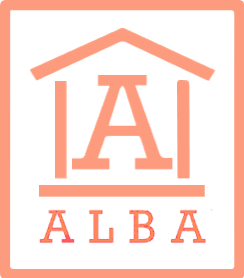Which is better: aerated concrete block or brick?
.jpg)
The analogy between these types of material can be drawn only in one way - all buildings made of them are called stone. Therefore, to evaluate each option separately, it is advisable to pay attention to hygroscopicity, thermal conductivity, density and operational period. The following can be said about the general difference between a gas block and brick:
- mass - a cubic meter of gas block masonry will weigh within 900 kg, while the weight of brick will be about 2 tons;
- wear resistance of materials - a brick made of baked clay will be three times stronger than aerated concrete;
- soundproofing of the room - in this aspect, aerated concrete has the best characteristics, exceeding the indicators of brick by dozens of times;
- thermal insulation of walls - aerated blocks retain heat best, however, when working with brick, you can use a water repellent, which will help save on materials;
- resistance to low temperatures - extraordinary strength and durability in this regard is guaranteed by brick, which is twice as strong as aerated concrete in terms of frost-resistant properties.
- speed of wall installation – due to the fact that aerated concrete blocks are much larger in size than bricks, construction from this material is much faster and more convenient.
As for the cost of construction, both bricks and aerated concrete blocks have approximately the same price. But weight plays a significant role. One truck can take 4-5 cubic meters of bricks or 12-15 cubic meters of aerated concrete at a time. Therefore, calculations of the final cost should be made taking into account the total volume of building materials.
Laminate or parquet: what to choose?
.jpg)
When choosing a floor covering, many people focus primarily on interior design and style. However, the characteristics of wear resistance and service life of the material should also be important. Therefore, it is important to pay attention to the properties of the two most commonly used types of covering - laminate and parquet. In this case, it is worth considering the following points:
- durability - laminate will last 10-20 years, depending on the quality class, while parquet is used for 20-50 years with the potential for restoration;
- environmental friendliness of materials - modern laminate models meet international standards, but have synthetic elements, parquet is made of natural wood, and therefore is completely environmentally friendly;
- floor moisture resistance - the highest class of laminate models have extremely high indicators, parquet is categorically not suitable for rooms with high humidity;
- price and quality of materials - parquet is considered the most expensive, since it is made from natural raw materials; in terms of quality, both materials are in no way inferior to each other.
Separately, it is necessary to note the specifics of caring for the floor covering. Both types of materials involve actually dry cleaning using a slightly damp cloth. To maintain the shine of the laminate, you need to buy special products in the store to add to the water, or use vinegar. Parquet requires a more thorough approach to care. Special waxes, oils are used from the products, after which polishing is carried out.
Knowing the basic characteristics of building materials, it will be easier for you to understand the features of their operation and make the right choice when buying.




.jpg)
.jpg)










